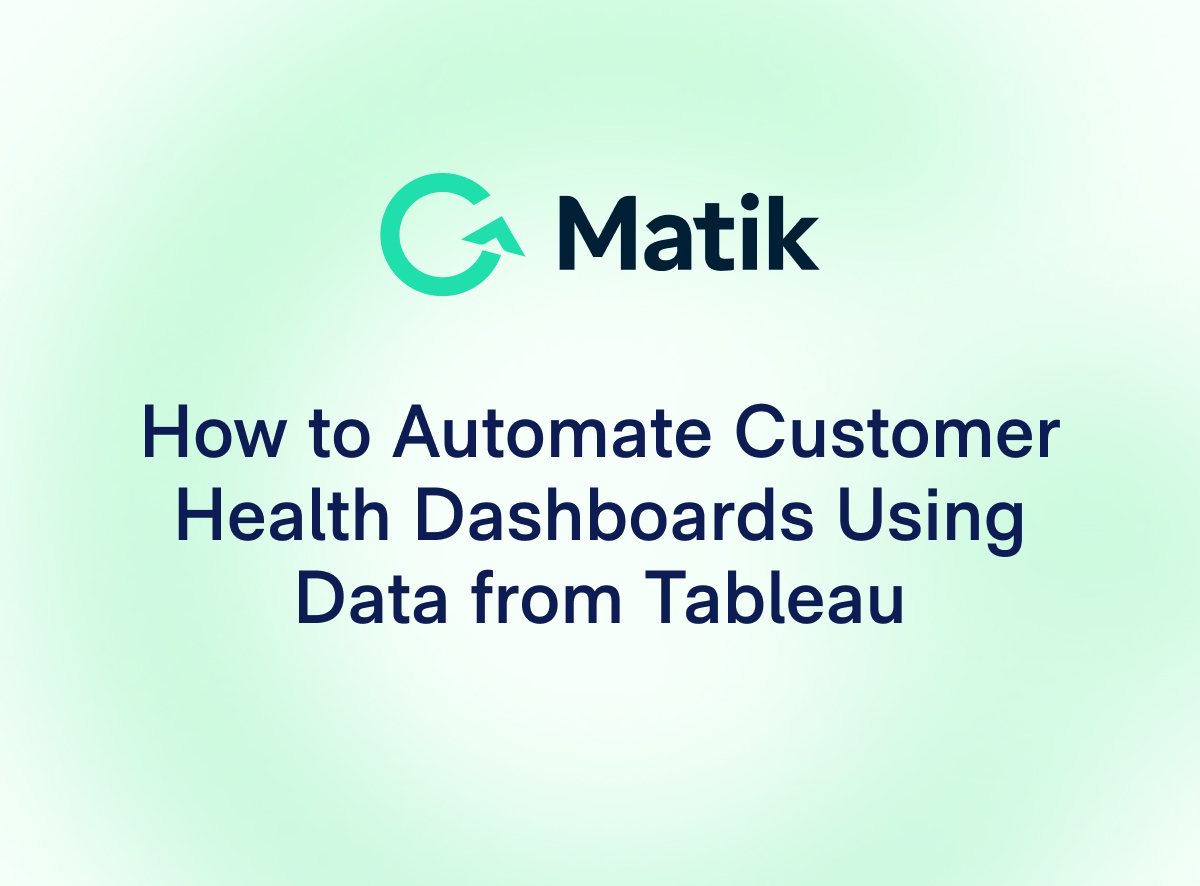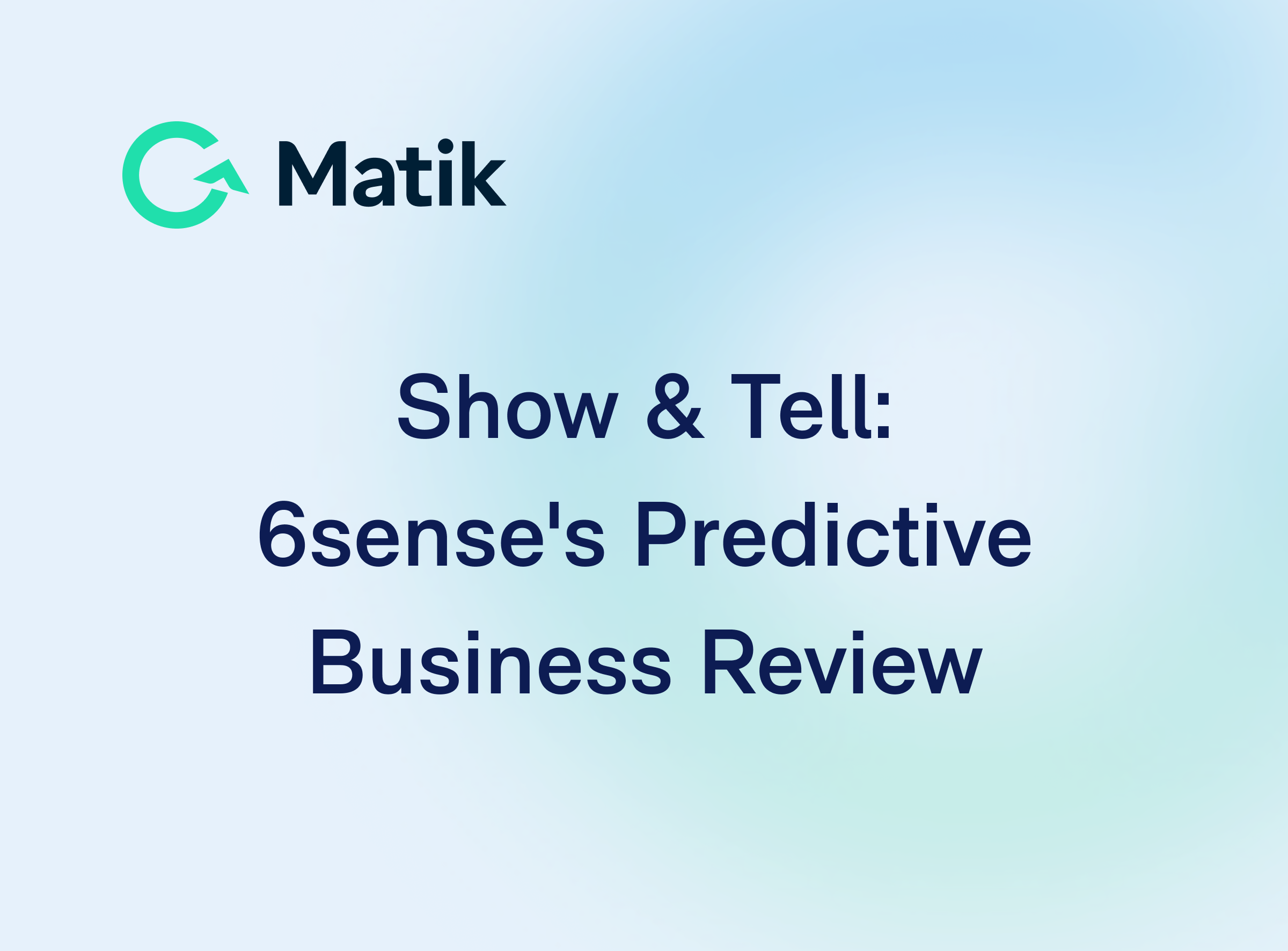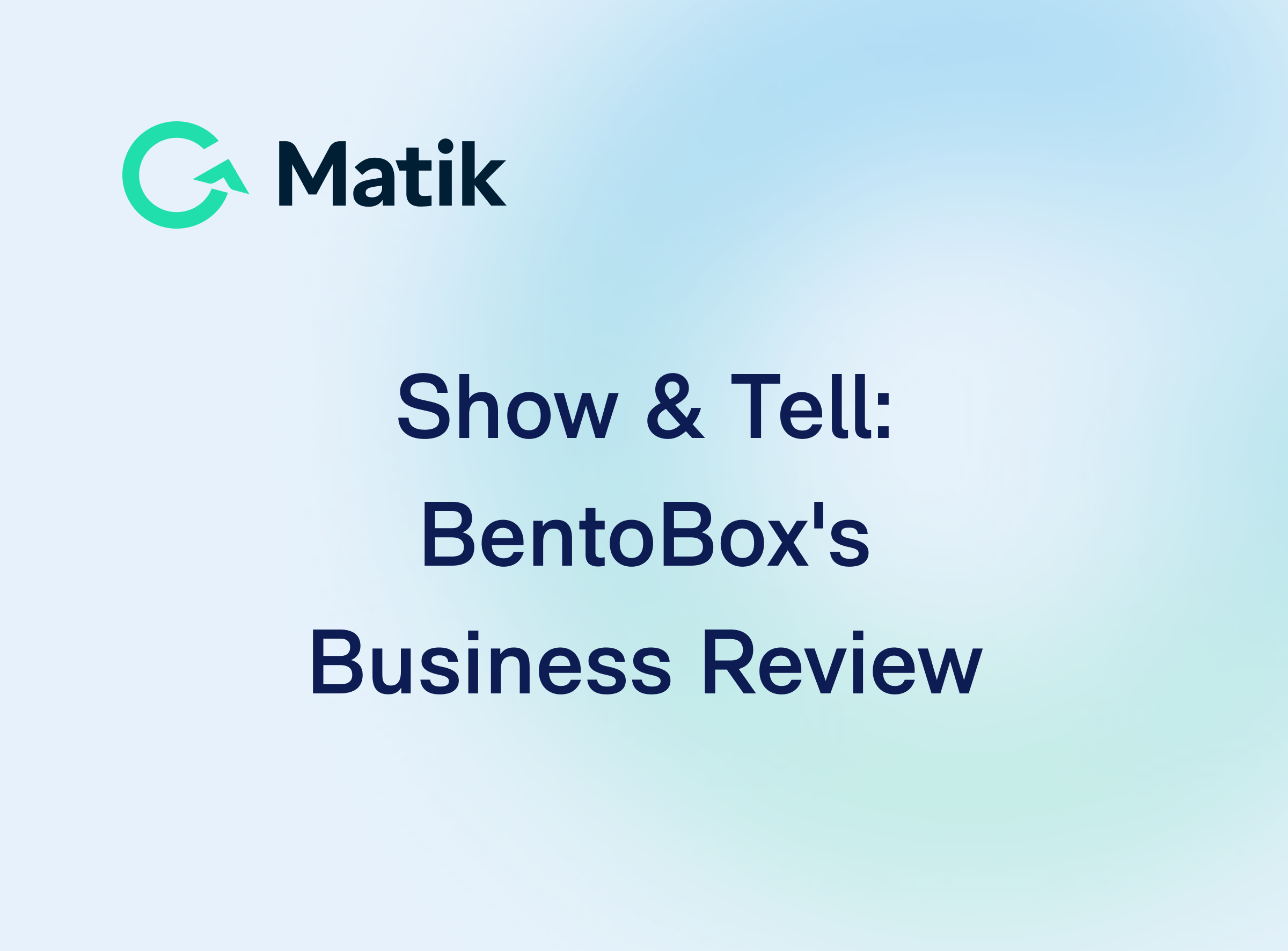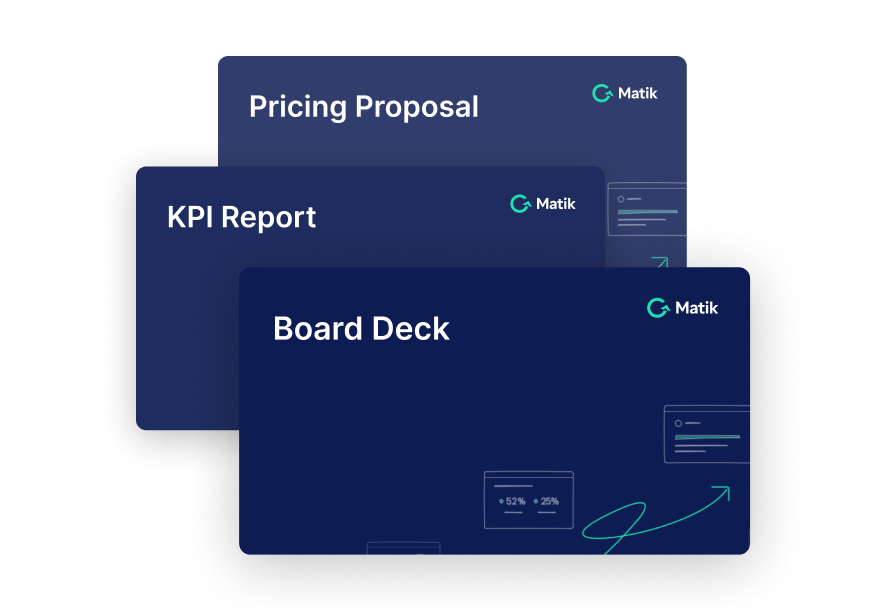Join Our Newsletter
If you work in Customer Success, you know that Customer Health Dashboards are the pulse of your team. They help you monitor account health, track adoption trends, and identify at-risk customers before renewal conversations even begin.
However, keeping those dashboards up-to-date with the latest information is challenging. Each week or month, you’re likely pulling metrics and charts from Tableau, cleaning up spreadsheets, and reformatting visuals before sharing updates with leadership or cross-functional teams. It’s time-consuming, repetitive, and often distracts from what really matters: driving outcomes for your customers.
It’s time to move beyond manually assembling data and focus on strategy. This guide shows you how to automate your Customer Health Dashboards using Tableau and Matik, helping you eliminate last-mile manual work while scaling the impact of your team’s insights.
What Are Customer Health Dashboards?
A Customer Health Dashboard is a recurring report or spreadsheet that summarizes key metrics across your customer base. It helps teams monitor adoption, engagement, satisfaction, and renewal risk so they can make proactive decisions.
These dashboards are typically created for:
- Customer Success Managers, who need to see which accounts need attention
- Leaders and Executives, who want to review overall retention and growth trends
- Cross-functional partners, such as Product or Sales, who depend on customer signals
The final output is usually a shareable spreadsheet or report, not an interactive BI dashboard. For example, a CSM might use Tableau as the data source, but the finished dashboard is built in a spreadsheet or slide deck that can be shared in a meeting or over email.
The Benefits of Automating Customer Health Dashboards
Manually building and updating these dashboards takes time. Every update requires running Tableau reports, exporting data, formatting numbers, and applying filters. Automating the process of creating the content means you can generate accurate, on-brand dashboards instantly without starting from scratch each time.
Here’s why automating this process is so valuable:
- Drive faster decisions: Up-to-date dashboards help your team act quickly on reliable data instead of waiting for manual updates.
- Ensure accuracy: Matik connects directly to your data sources, ensuring the right metrics and definitions are used every time.
- Keep messaging consistent: Templates ensure every dashboard follows the same structure, language, and visuals whether it’s for an individual CSM or an executive.
- Personalize at scale: Apply variables to tailor dashboards by account owner, customer segment, or region, without duplicating effort.
- Save time: Automating your branded templates and data pulls eliminates repetitive work, giving CSMs more time to focus on strategy and customer engagement.
Matik’s AI automates the creation of presentations, documents, and reports directly from your data. You can pull from BI tools such as Tableau, CRMs, data warehouses, and spreadsheets to instantly produce on-brand, insight-rich dashboards. Teams at Okta, Asana, Autodesk, Samsara, and Zapier already use Matik to align messaging, scale best practices, and tell consistent data stories that drive action faster than ever.
How to Automate Customer Health Dashboards Using Tableau and Matik
There are many ways to build dashboards, but if you want something that connects directly to Tableau and produces reports instantly, Matik makes it simple.
Here’s how it works:
1. Upload Your Template
Start by uploading your existing Customer Health Dashboard template into Matik. This could be a Google Sheet, Excel workbook, or presentation file such as Google Slides or Microsoft PowerPoint you already use to share account health.
2. Connect Tableau as Your Data Source
Connect Tableau to Matik so it can query live data each time you generate the dashboard. You can also connect other systems such as Salesforce or Snowflake for a more complete picture of customer health.
3. Select the Data You Want to Pull
Within Matik, choose the specific Tableau views or data fields you want to include, such as product usage, renewal risk, or support activity. Matik’s AI will automatically query the data each time you generate or refresh the content.
4. Personalize the Dashboard
Select variables that dictate the scope of the personalization, so that dashboards adjust automatically for different audiences. For example:
- CSM Name: filter to accounts owned by a specific rep
- Customer Segment: show Enterprise, Mid-Market, or SMB metrics
- Date Range: update the dashboard for the current quarter or month
5. Generate or Refresh Instantly
Once everything is set, you can generate new dashboards instantly at any time or refresh an existing one before a meeting. The content updates automatically, keeping visuals, tables, and text current, on-brand, and in your preferred format without extra manual work.
Why Matik Is Built for This
Matik automates text, visuals, and insights so every Customer Health Dashboard tells the right story.
With Matik, you can:
- Instantly generate accurate, on-brand Customer Health Dashboards from Tableau data
- Scale personalization across every account or team
- Ensure consistent structure and metrics across your organization
Deliver data-backed insights that spark proactive conversations
Matik’s AI makes data storytelling easy for everyone. It ensures correct metrics are used, applies best practices, and enables teams to communicate insights confidently. The result is faster, smarter, and more consistent reporting.
Final Takeaway
Automating your Customer Health Dashboards with Tableau and Matik turns what used to be hours of repetitive work into a few clicks. You get reliable, personalized, and visually consistent reports that help your team focus on what matters most.
---
Ready to spend less time maintaining dashboards and more time managing success?Start a conversation with us.














